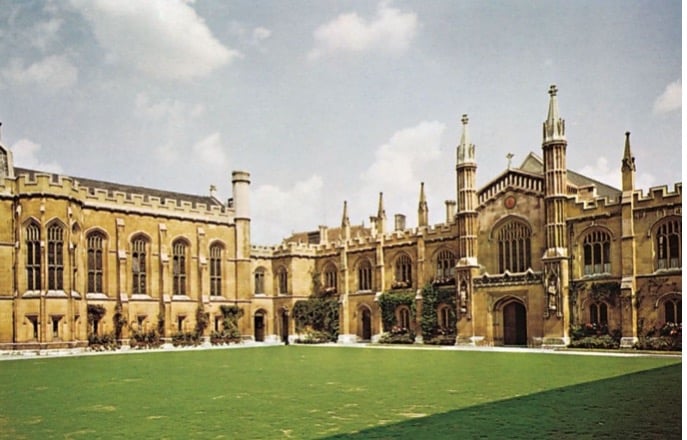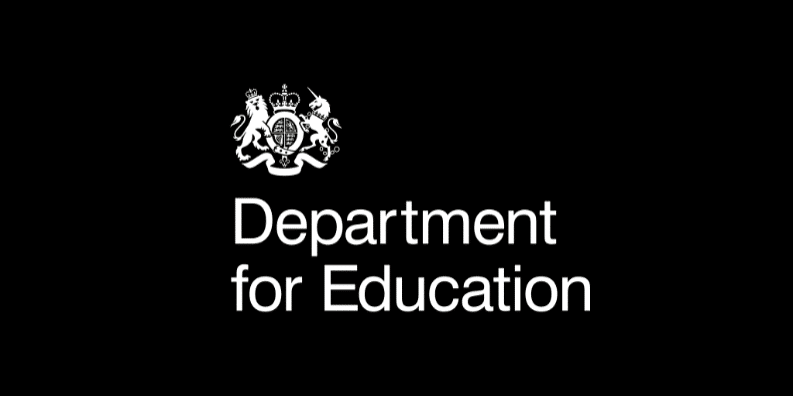Gen Z and Gen Alpha face a system designed to tax aspiration out of existence.

Long-term readers will have considered my views on the insane complexity of the UK’s tax and pension regimes, my thoughts on the Truss-Kwarteng budget that never was, energy bill support, and the potential house price crash.
One area I have not explored is student loans, which is quite possibly the most inequitable system devised by mankind. This article isn’t about whether university is worth the expense (increasingly not for many people), or to what extent a degree should be funded by the individual or the taxpayer.
It’s not even about whether too many people are attending university, or whether universities have insufficient funding or waste extravagant amounts of taxpayer cash.
Personally, I think that if a degree results in higher earnings, then the graduate is already going to pay far more tax than the cost of the education over their working life. Indeed, IFS data suggests that men earn £130k more and women £100k more over their working lives after going to university — and arguing that this means graduates should be taxed more ignores the fact that they already are.
Further, when UK taxes were far lower than our European counterparts, there was an argument that imposing repayable loans wasn’t unreasonable; nowadays we have the highest tax burden since WWII and have more than caught up with our supposedly high tax neighbours.
Instead, I’m going to succinctly cover the inequities in the system that pit generation against generation in a desperate attempt to balance a set of unbalanced books.
Student Loans inequity
There are five current types of student loan — Plans 1,2,3,4 and 5. Plan 3 loans are postgraduate loans (another 6% on income), while plan 4 loans concern the Scottish system.
Therefore, only three loan types concern undergraduate English students:
- Plan 1 (pre-2012) — repayments of 9% on annual income over £22,015. Written off after 25 years. Tuition fees cost £3,000 per annum + maintenance loans. Interest rate set at the lower of RPI or BoE base rate +1%. Currently 5.25%.
- Plan 2 (2012-2022) — repayments of 9% on annual income over £27,295. Written off after 30 years. Tuition fees cost £9,000-£9,250 per annum + maintenance loans. Interest rate variable dependent on income, but typically RPI plus up to 3% more the more you earn. Currently 6.9% due to cap.
- Plan 5 (2023 onwards) — repayments of 9% on annual income over £25,000. Written off after 40 years. Tuition fees cost £9,250 per annum + maintenance loans. Interest rate set at RPI, minus cap.
With all three plans, maintenance loans are calculated based on parental income, without considering any other factors. If your parents refuse to top up your loan, that’s tough. If they have multiple children still at home and can’t afford to, that’s also a problem.

And the income considered does not consider assets — such that the child of a parent with £100 million in assets gets the maximum maintenance loan and the child of a parent with no assets but who earns over circa £42kpa gets the bare minimum, which at a few grand, isn’t even close to a liveable amount.
It’s more iniquitous than this though, because in cases where parents ‘top up’ the maintenance loan of their child, that child then has a smaller loan and smaller interest payments on that loan. This makes paying off the capital easier and increases their income later on in their careers compared to those taking on the maximum amount.
Case studies
The way these different plans effect students’ lifetime income create deep inequity. Bear in mind that these are approximated figures:
Plan 1 students
- Tom graduates in 2010 with £22,000 of debt. He earns an average of £27kpa for 25 years, paying off £40 per month until the debt is wiped in its entirety 2035. He then gets earns an average of £35kpa for the next 15 years, which is not subject to student loan deductions.
- Jane graduates in 2011 with £22,000 of debt. She earns an average of £45kpa for 25 years, paying off £170 per month, paying off the debt, and all interest accrued, years before it would get wiped in 2026.
- Simon graduates in 2009 with £24,000 of debt. He’s landed a Magic Circle contract so starts earning £75kpa in short order and pays off the entire debt with little interest in a few years. His high earnings are then not subject to loan deductions for most of his career.
Plan 2 students
- Annabel graduates in 2015 with £40,000 of debt. She earns slightly less than £27kpa for 30 years and her tuition is completely free.
- Monty graduates in 2017 with £45,000 of debt (the average is £45,800). He earns £50kpa for 30 years, paying off £170 per month but never comes close to paying back the capital. In fact, the interest on his loan amounts to an extra £3,000 every year straight away, and his repayments come to £2,000 per year.
- Zeynab graduates in 2018 with £47,000 of debt. She develops a lucrative marketing career, and earns an average of £90kpa shortly after graduating — paying off the debt within a few years alongside a moderate amount of interest.
- Muhammed graduates in 2019 with no debt. Like 10% of all UK students, his parents paid his tuition fees, rent, and living expenses. Mo now has no debt and additional earnings for his entire career.
Plan 5 students
- Alice graduates in 2026 with £50,000 of debt. She earns the UK average £40k salary for the next 40 years, and the 9% deduction is applied to more than half of her salary for her entire working life.
Inequities to consider
Currently, circa £20 billion is ‘loaned’ to about 1.5 million students in England every year. Outstanding loans in March 2022 were £182 billion — for context, the UK’s largest mortgage lender Lloyds has circa £300 billion of mortgage lending on its books. And the government expects the value of outstanding loans to be around £460 billion (2021‑22 prices) by the mid-2040s.

Department for Education figures indicate that only 20% of Plan 2 students will repay their loans in full — but this rises to 55% for new plan 5 students.
The department’s most recent analysis considers that just 47% of the £19.1 billion lent to students in the 2020-21 academic year will be repaid. Student loans are large by international standards — with the OECD naming England as one of the most expensive countries to study.
The inequities are obvious.
The debt burden on plan 1 students is relatively small — while the repayment threshold is lower, there is a reasonable chance of paying back the debt — and regardless, all debt is wiped within 25 years anyway. If you graduate at age 21, you’re then debt-free by 46 — the point at which earnings start to accelerate.
The burden on plan 2 students is larger — while the repayment threshold is higher, higher interest rates combined with increasing interest on larger incomes and the 30-year lifespan of the loan means it is hard to pay off. The burden on plan 5 students is ridiculous — 40 years of paying back the cost of university is essentially a lifetime tax. Worse, it makes pension saving incredibly hard, further deepening inequality.
Then there’s the relative earnings question to consider. Regardless of which plan you’re on, the middle is squeezed. Graduates earning close to or below the repayment threshold pay little or nothing for their degree. Graduates earning far above the national average — who are likely to also have wealthier parents and smaller loans anyway — pay loans back rapidly with minimal interest and then benefit from compounding returns on excess income saved.
It’s that middle-earning graduate who gets penalised. The Janes, Montys, and Alices of the world who earn above moderately above-average income and are then hit with student loan repayments for 25, 30, or now even 40 years. Every penny they earn over £50k gets hit with income tax, NI, and student loan repayments for an effective marginal rate over 50%.
I can’t help but think this inequity is intentional. It keeps the different generations fighting against change as each new generation gets hit with worse terms just as the older generation sees their debt get close to being wiped out.
And in its current and proposed state, the student loans system acts as a damning tax on aspiration. If you go nowhere, you pay nothing. If you outperform early on — often using parental contacts — you’re fine. But if you work a standard office job and go a for a promotion, more than half your income goes back to the government. Add in the high income child benefit charge, and this often rises to 70%+.
Especially for the self-employed, it acts as a powerful disincentive to work more.
I’m keenly aware that most reading this article will be additional rate taxpayers who overall benefit from the current system. But spare a thought for the UK’s weak productivity this afternoon and consider the Laffer Curve.
We put taxes on alcohol, tobacco, and sugar to discourage their use. Overtax income in the ‘aspirational’ tax bracket between £50k-£70k and productivity falls.
Student loans are no exception.
This article has been prepared for information purposes only by Charles Archer. It does not constitute advice, and no party accepts any liability for either accuracy or for investing decisions made using the information provided.
Further, it is not intended for distribution to, or use by, any person in any country or jurisdiction where such distribution or use would be contrary to local law or regulation.
